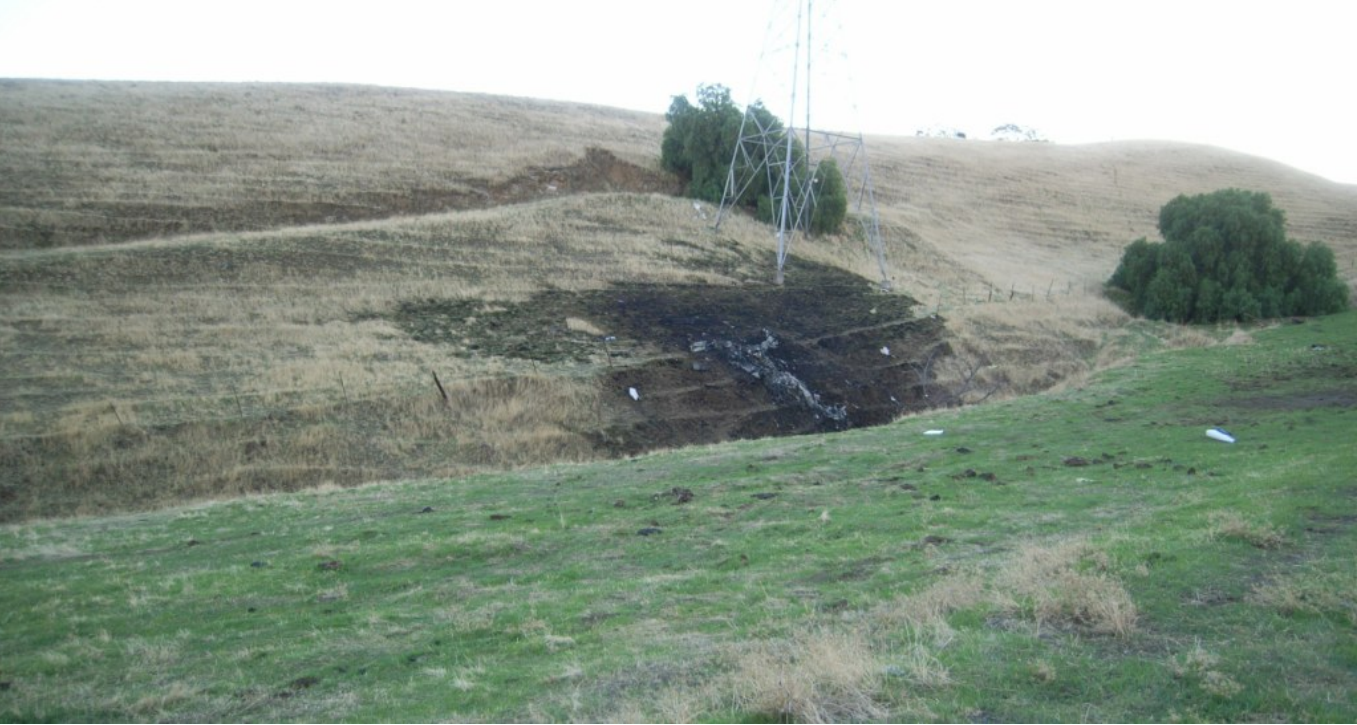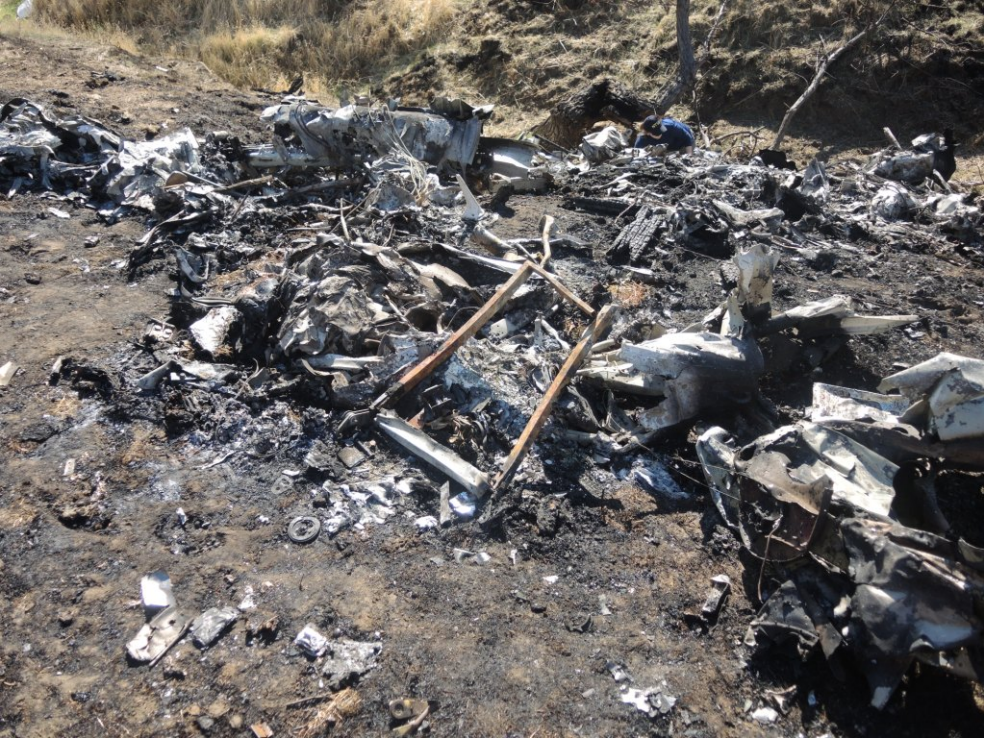
ASN Wikibase Occurrence # 190927
This information is added by users of ASN. Neither ASN nor the Flight Safety Foundation are responsible for the completeness or correctness of this information.
If you feel this information is incomplete or incorrect, you can submit corrected information.
| Date: | Tuesday 25 October 2016 |
| Time: | 12:20 |
| Type: |  Beechcraft A36 Bonanza |
| Owner/operator: | Private |
| Registration: | N364RM |
| MSN: | E-2957 |
| Year of manufacture: | 1995 |
| Total airframe hrs: | 2626 hours |
| Engine model: | Continental TIO-550 |
| Fatalities: | Fatalities: 2 / Occupants: 2 |
| Aircraft damage: | Destroyed |
| Category: | Accident |
| Location: | Pittsburg, CA -
 United States of America United States of America
|
| Phase: | Initial climb |
| Nature: | Private |
| Departure airport: | Buchanan Field Airport, CA (CCR) |
| Buchanan Field Airport, CA (CCR) | |
| Investigating agency: | NTSB |
| Confidence Rating: |
The private pilot and the pilot-rated passenger were making a local personal flight in the airplane in visual flight rules conditions so that the passenger could assist the pilot in becoming familiar with avionics components that had recently been installed. The new avionics components were upgrades of the previously-installed combination communication, ground-based navigation, and GPS navigation units. No flight testing of the airplane was conducted after the installation of the new avionics, nor was any required. The airplane was only flown once in the period between the avionics installation and the accident flight. That flight was conducted by the pilot who was the passenger on the accident flight and was uneventful.
According to acquaintances, both pilots were experienced in the accident airplane make and model. The pilots planned to fly to a practice area east of the airport, but the details of their plans were not known. Following a normal takeoff, the airplane began a turn to the east at an altitude of about 500 ft and climbed at a normal speed and rate for about 3 1/2 minutes. The airplane reached a maximum radar-indicated altitude of about 3,400 ft, where it leveled off for about 8 seconds. It then entered a descending left turn, and the descent rate and airspeed increased continuously. Analysis indicated that the average descent rate was about 5,000 ft per minute (fpm), and the maximum rate was about 10,000 fpm. During the descent, the speed increased from about 120 kts to nearly 250 kts, which was significantly above the airplane's never-exceed speed of 203 kts. During the descent, the pitch attitude decreased from about 5° airplane nose up to nearly 30° airplane nose down, and the total heading change was about 70°. The high descent rate, airspeed, and nose-down pitch attitude were consistent with an uncontrolled descent. About 30 seconds after the descent began, the airplane struck high-tension powerlines and then impacted terrain.
The airplane was highly fragmented by impact with the line, ground impact, and a post-impact fire altered or consumed much of the remaining structure and other evidence. All flight control surfaces were accounted for; however, flight control continuity could not be confirmed due to the extent of the damage.
No evidence of an in-flight fire or a bird strike was observed in the wreckage. Further, the two occupants were both capable of flying the airplane, any incapacitation would have had to affect both. Although ethanol was detected in the passenger's tissues, the levels varied widely, consistent with post-mortem ethanol formation; therefore, the ethanol did not contribute to the accident. Thus, it is unlikely that a flight control malfunction or failure or pilot incapacitation contributed to this accident.
It is possible the recent avionics installation may have resulted in physical control interference or mechanical failure; while no direct evidence of this was found, the condition of the wreckage precluded elimination of that possibility. Also, although there were no reports of any previous problem with the airplane's electronic flight control system, it is possible that an uncommanded or inadvertent control input via the autopilot or electric trim may have occurred and led to the loss of control. No direct evidence of an electronic flight control system malfunction was found; however, the condition of the wreckage precluded elimination of the possibility.
Probable Cause: A loss of airplane control for reasons that could not be determined due to the extensive impact and fire damage to the airplane.
Accident investigation:
 |
|
Sources:
NTSB
FAA register: http://registry.faa.gov/aircraftinquiry/NNum_Results.aspx?NNumbertxt=364RM
Location
Images:


Photos(c): NTSB
Revision history:
| Date/time | Contributor | Updates |
|---|---|---|
| 26-Oct-2016 00:34 | Geno | Added |
| 26-Oct-2016 11:50 | Iceman 29 | Updated [Embed code] |
| 26-Oct-2016 15:48 | Geno | Updated [Aircraft type, Registration, Cn, Operator, Total occupants, Source, Narrative] |
| 27-Oct-2016 06:16 | CTYONE | Updated [Total fatalities] |
| 03-Nov-2016 20:16 | Geno | Updated [Phase, Nature, Departure airport, Source] |
| 02-Mar-2019 14:46 | ASN Update Bot | Updated [Time, Operator, Nature, Departure airport, Destination airport, Source, Narrative, Accident report, ] |
| 12-Mar-2022 23:19 | Captain Adam | Updated [Location, Departure airport, Destination airport, Source, Embed code, Narrative, Photo] |
| 12-Mar-2022 23:19 | Captain Adam | Updated [Photo] |
Corrections or additions? ... Edit this accident description
The Aviation Safety Network is an exclusive service provided by:


 ©2024 Flight Safety Foundation
©2024 Flight Safety Foundation